
Austrian and Slovenian Escapade: Cities, Nature, and History
 10 Day Tour of Vienna, Salzburg and Ljubljana
10 Day Tour of Vienna, Salzburg and Ljubljana
Overview
Trip Map
Itinerary
Inclusions
Reviews







10 Days 9 Nights
Best Time: Jan-Dec
Outdoor Activities
Nature Lovers
This 10-day journey through Austria & Slovenia blends picturesque European cities with breathtaking natural wonders. Begin in Vienna, where imperial grandeur meets Baroque elegance. Wander historic streets and hike to a castle during a scenic Danube cruise. Next, discover Salzburg’s remarkable beauty & musical heritage, and take an excursion to an Alpine lake. Continue by train to Slovenia, where the enchanting city of Ljubljana awaits. Stroll its charming streets and cycle along the river. Conclude with the serene landscapes of Lake Bled, perfect for nature lovers and hikers. Enjoy a stress-free trip with our detailed travel guidance.
- Discover Vienna’s inner city with a private guided tour, including the historic Hofburg Palace.
- Explore the medieval Hohensalzburg Castle in Salzburg, offering stunning city and mountain views.
- Visit the incredibly clear Königssee Lake, surrounded by towering mountains and Alpine meadows.
- Enjoy private guided walking & cycling tours in Ljubljana, uncovering unique architecture & history.
- Take a serene boat ride on Lake Bled and hike through the breathtaking Vintgar Gorge.
This 10-day journey through Austria & Slovenia blends picturesque European cities with breathtaking natural wonders. Begin in Vienna, where imperial grandeur meets Baroque elegance. Wander historic streets and hike to a castle during a scenic Danube cruise. Next, discover Salzburg’s remarkable beauty & musical heritage, and take an excursion to an Alpine lake. Continue by train to Slovenia, where the enchanting city of Ljubljana awaits. Stroll its charming streets and cycle along the river. Conclude with the serene landscapes of Lake Bled, perfect for nature lovers and hikers. Enjoy a stress-free trip with our detailed travel guidance.
- Discover Vienna’s inner city with a private guided tour, including the historic Hofburg Palace.
- Explore the medieval Hohensalzburg Castle in Salzburg, offering stunning city and mountain views.
- Visit the incredibly clear Königssee Lake, surrounded by towering mountains and Alpine meadows.
- Enjoy private guided walking & cycling tours in Ljubljana, uncovering unique architecture & history.
- Take a serene boat ride on Lake Bled and hike through the breathtaking Vintgar Gorge.

Hofburg Palace
Castles & Chateaux

St Stephen’s Cathedral
Churches & Monasteries

Museumsquartier
Museums & Galleries

Schönbrunn Palace & Zoo
Parks & Gardens

Hohensalzburg Fortress
Castles & Chateaux

Old Town
Architecture

Triple Bridge
Architecture

Ljubljana Castle
Castles & Chateaux

Old Town
Historic Landmarks
Must see sights

Hofburg Palace
Castles & Chateaux

St Stephen’s Cathedral
Churches & Monasteries

Museumsquartier
Museums & Galleries

Schönbrunn Palace & Zoo
Parks & Gardens

Hohensalzburg Fortress
Castles & Chateaux

Old Town
Architecture

Triple Bridge
Architecture

Ljubljana Castle
Castles & Chateaux

Old Town
Historic Landmarks
Starting from
$1940
per person
 Not included
Not included Secure Your Customizable Trip
Enter your details to embark on a journey that can be tailored just for you.
Start
Travelers
0 travelers
Add Room
Remove Room
Preferred Hotel Stars
Select Hotel Stars
Craft Your Own Itinerary
Select your interests and destinations for a trip plan inspired by you.
Austria and Slovenia Trip - Map & Itinerary
Enable/Disable Map Scrolling
Click To Make Map Interactive

Austria and Slovenia Trip Timeline
 Edit Details
Edit DetailsArrival
3 nights
Vienna
Austria
Train: 2.5h
3 nights
Salzburg
Austria
Train: 3h
Train: 2h
3 nights
Ljubljana
Slovenia
Departure
Day-By-Day Itinerary of Austria and Slovenia Trip

Day 1
Arrive Vienna
Day 1
Arrive Vienna



To Be Determined
Taxi Transfer to Hotel
Vienna has one main airport, Vienna International Airport, where almost all visitors arrive. Taxis are available directly at the terminal exit, or you can arrange a private transfer for added convenience. Uber is also available to those who have the app.

Day 1
Arrive Vienna


Day 1
Arrive Vienna




To Be Determined:
Taxi Transfer to Hotel
Mid-Day/Afternoon:
Ring Street
Late Afternoon/Early Evening:
Inner City


Day 2
Vienna
Day 2
Vienna



9:00 AM - 11:30 AM
Guided Walk of the Inner City
This tour takes you back in history to explore the Vienna that stood within the old city walls. You will learn about the humble beginnings of Vienna before it became the capital of a great empire and one of the most important cities in Europe. You will discover how Vienna's early inhabitants lived and how they left their mark on the city and its beautiful Medieval, Renaissance, and Baroque architecture.

Day 2
Vienna



Day 3
Vienna
Day 3
Vienna

Early Morning to Early Evening
Wachau Valley
A one-and-a-half-hour train ride from Vienna brings you to the town of Melk, where you can tour the vast Melk Abbey. From there you can begin a 22-mile cruise through the Wachau Valley, considered the most beautiful stretch of the entire Danube River. You'll pass medieval castle ruins, hills covered in vineyards, and several charming villages, where you can debark to try some wine or take a hike up to a castle. The valley is also a perfect destination for cyclers and winery tours.

Dürnstein
Explore the twisting narrow lanes of this delightful monastery town.
Show More

Dürnstein Castle Ruins
Hike to the dramatic ruins of a medieval castle built in 1100's.
Show More

Melk Abbey
Tour a huge and splendid Baroque monastery.
Show More

Spitz
Stop to taste the wine in a postcard-pretty town surrounded by vineyards.
Show More

Dürnstein
Explore the twisting narrow lanes of this delightful monastery town.
Show More

Dürnstein Castle Ruins
Hike to the dramatic ruins of a medieval castle built in 1100's.
Show More

Melk Abbey
Tour a huge and splendid Baroque monastery.
Show More

Spitz
Stop to taste the wine in a postcard-pretty town surrounded by vineyards.
Show More
prev
next

Day 3
Vienna

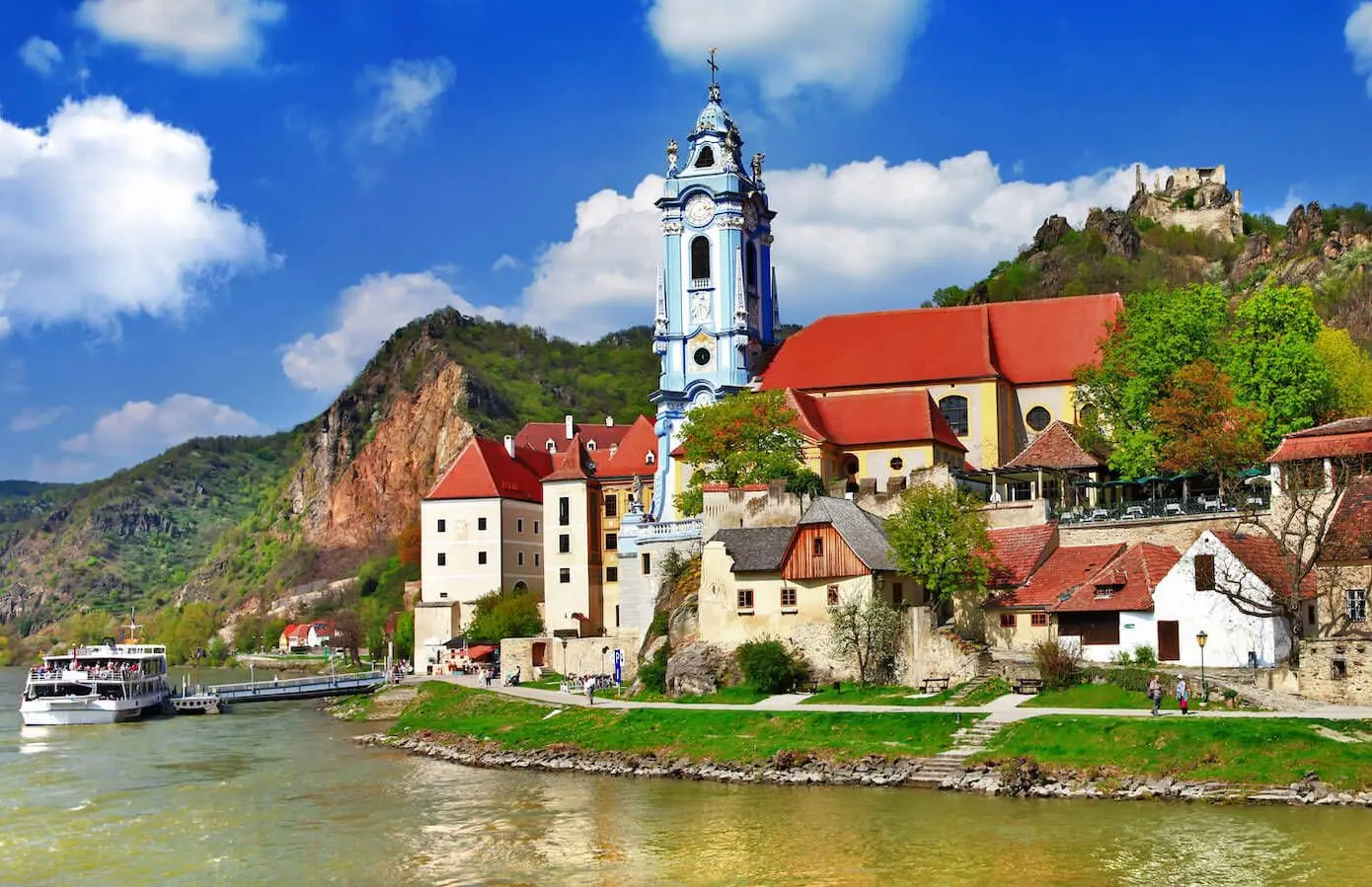
Dürnstein
 Highlight of Wachau Valley
Highlight of Wachau ValleyExplore the twisting narrow lanes of this delightful monastery town.
Named for the castle that overlooks it, Dürnstein is probably the most-visited stop in the Wachau valley. Reached by an ancient tunnel leading from the boat docks, it is well-known for its wine as well as the beautiful blue church tower of its Augustinian monastery.
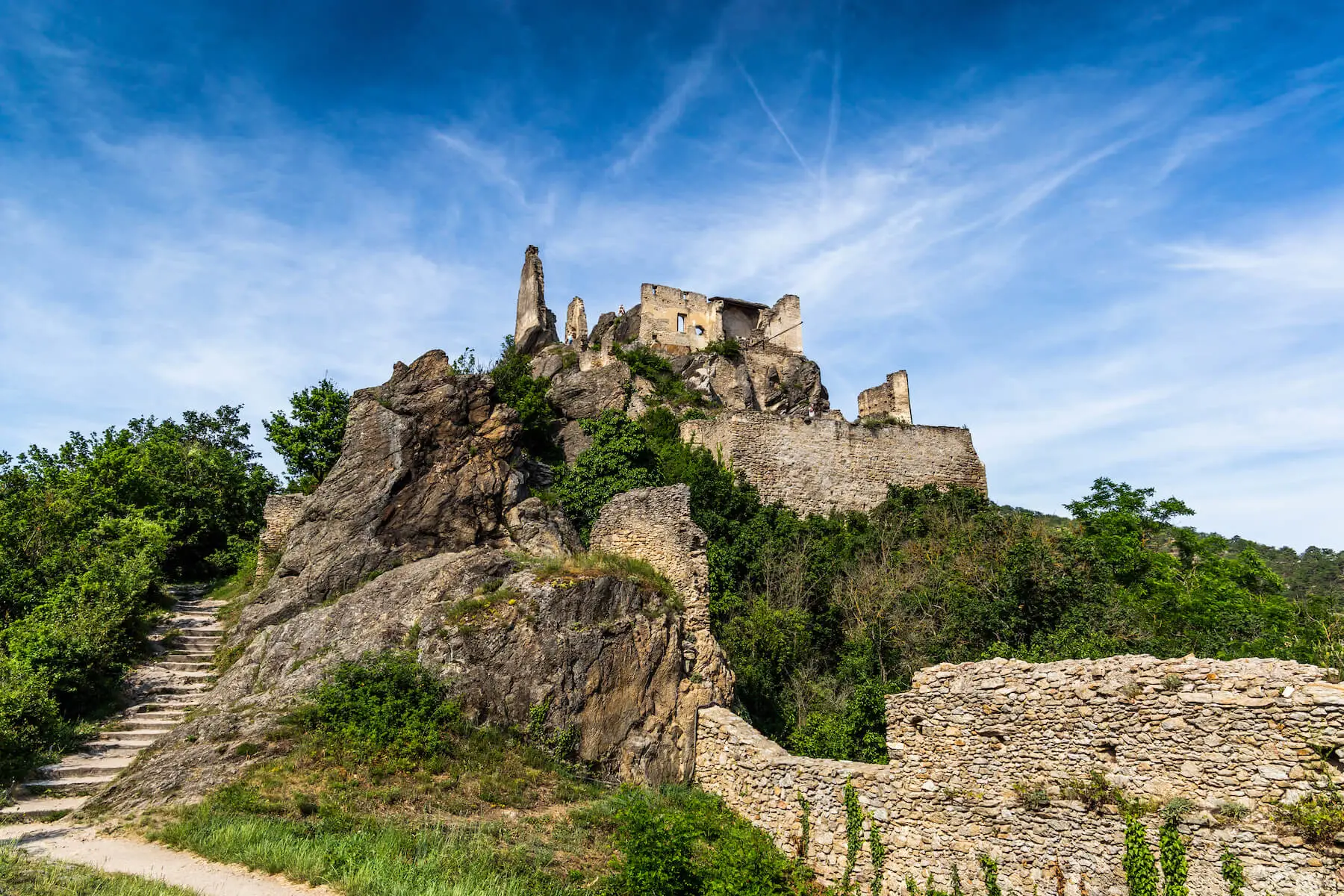
Dürnstein Castle Ruins
 Highlight of Wachau Valley
Highlight of Wachau ValleyHike to the dramatic ruins of a medieval castle built in 1100's.
The hike leading to the castle is steep, but the amazing view you are rewarded with makes it all worth while. The fascinating ruins are extensive and can be freely explored. The castle was made famous by its most illustrious prisoner, King Richard the Lionhearted of England, who was held there for ransom.
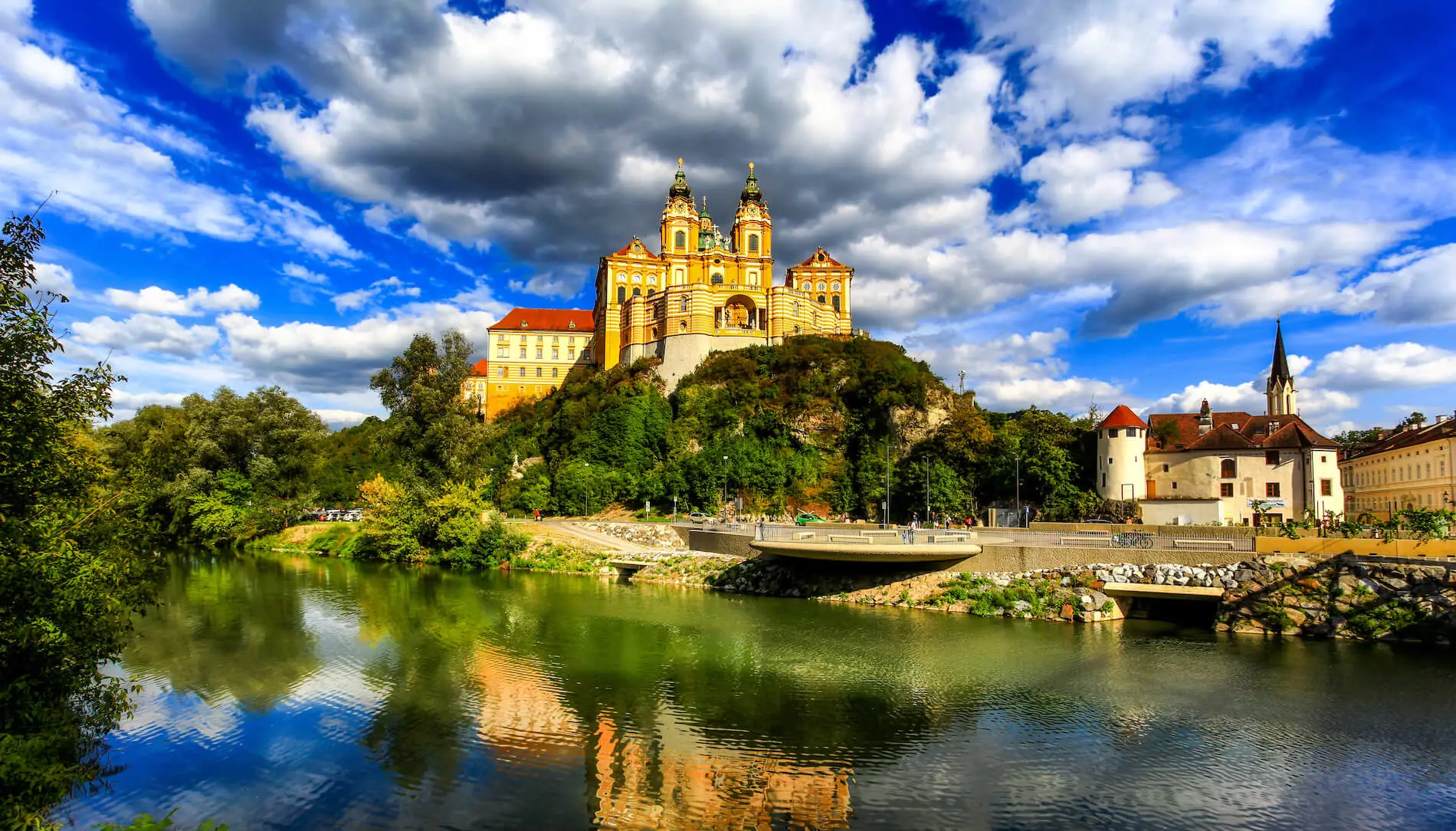
Melk Abbey
 Highlight of Wachau Valley
Highlight of Wachau ValleyTour a huge and splendid Baroque monastery.
Founded in 1089 when the Austrian duke gave one of his castles to Benedictine monks, Melk Abbey is now both a place of pilgrimage and a major tourist attraction. Visitors come for the museum of religious artifacts, the jaw-dropping library, and the sublime church. The town square below the abbey is also a great place for a meal or wine.
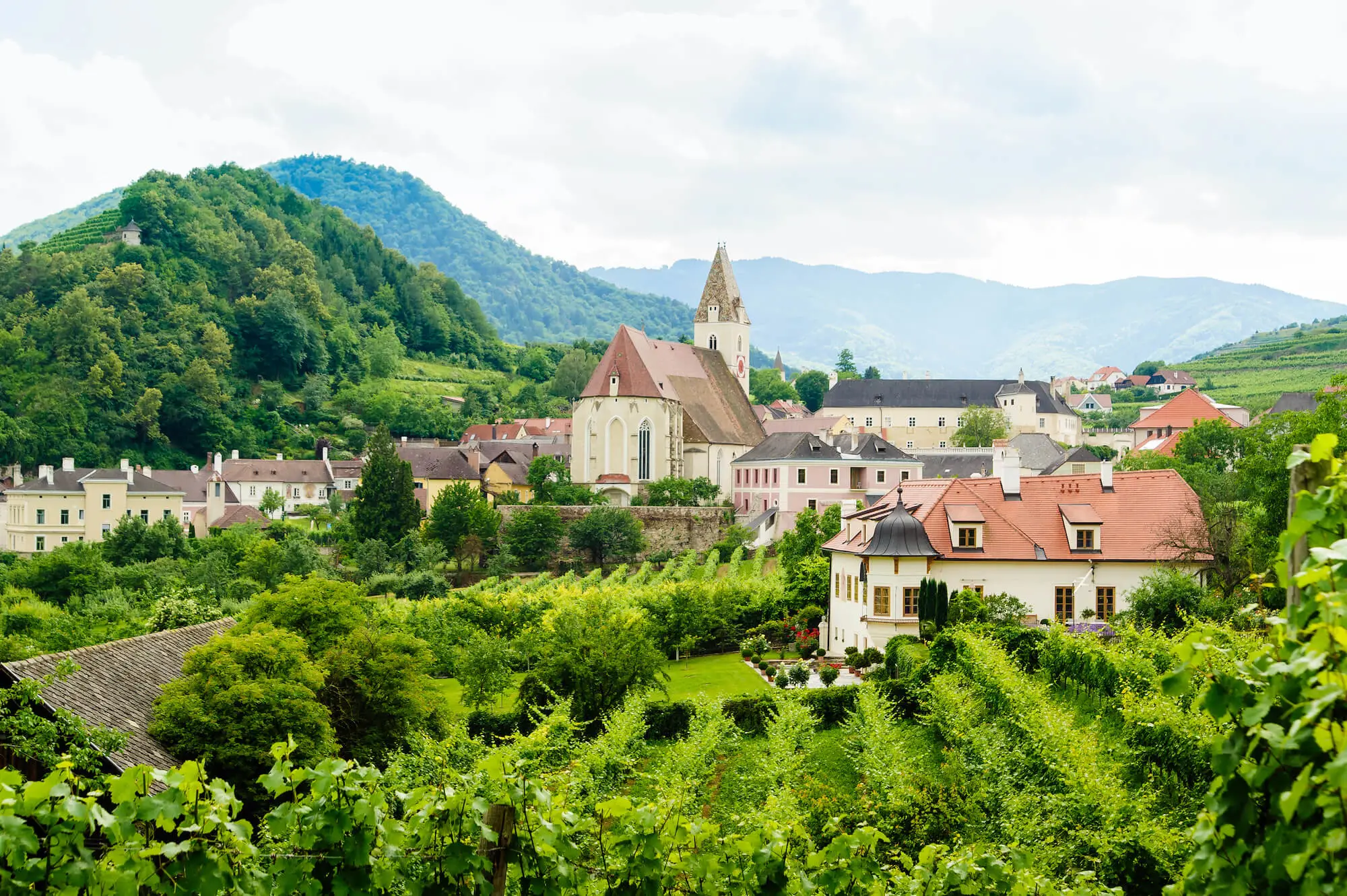
Spitz
 Highlight of Wachau Valley
Highlight of Wachau ValleyStop to taste the wine in a postcard-pretty town surrounded by vineyards.
Spitz is a favorite stop due to its bucolic atmosphere and abundance of wine taverns and restaurants. It is also home to the Tausendeimerberg or "House of a Thousand Buckets" (so named for the abundance of wine fields) and the castle ruins of Hinterhaus, which make for a nice (if steep) hike from the village.

Dürnstein
 Highlight of Wachau Valley
Highlight of Wachau ValleyExplore the twisting narrow lanes of this delightful monastery town.
Named for the castle that overlooks it, Dürnstein is probably the most-visited stop in the Wachau valley. Reached by an ancient tunnel leading from the boat docks, it is well-known for its wine as well as the beautiful blue church tower of its Augustinian monastery.

Dürnstein Castle Ruins
 Highlight of Wachau Valley
Highlight of Wachau ValleyHike to the dramatic ruins of a medieval castle built in 1100's.
The hike leading to the castle is steep, but the amazing view you are rewarded with makes it all worth while. The fascinating ruins are extensive and can be freely explored. The castle was made famous by its most illustrious prisoner, King Richard the Lionhearted of England, who was held there for ransom.

Melk Abbey
 Highlight of Wachau Valley
Highlight of Wachau ValleyTour a huge and splendid Baroque monastery.
Founded in 1089 when the Austrian duke gave one of his castles to Benedictine monks, Melk Abbey is now both a place of pilgrimage and a major tourist attraction. Visitors come for the museum of religious artifacts, the jaw-dropping library, and the sublime church. The town square below the abbey is also a great place for a meal or wine.

Spitz
 Highlight of Wachau Valley
Highlight of Wachau ValleyStop to taste the wine in a postcard-pretty town surrounded by vineyards.
Spitz is a favorite stop due to its bucolic atmosphere and abundance of wine taverns and restaurants. It is also home to the Tausendeimerberg or "House of a Thousand Buckets" (so named for the abundance of wine fields) and the castle ruins of Hinterhaus, which make for a nice (if steep) hike from the village.
prev
next

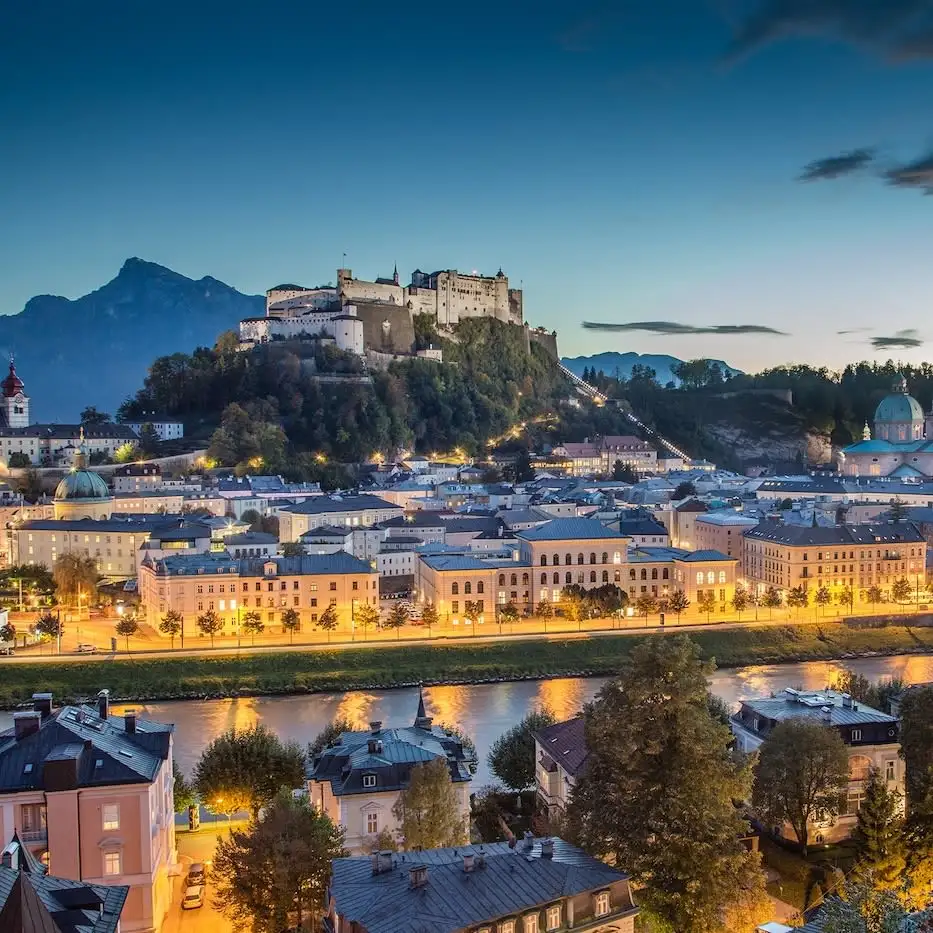
Day 4
Vienna to Salzburg
Day 4
Vienna to Salzburg




11:40 AM
Taxi Transfer to Rail Station
Your hotel front desk will also be happy to arrange a taxi pick up for you. Vienna taxis are generally reliable and honest, so this is cheaper than a pre-arranged transfer. Your itinerary will provide more information on ordering a taxi, as well as detailed information on navigating the train station and finding your train, making the whole process simple and stress-free.

Day 4
Vienna to Salzburg


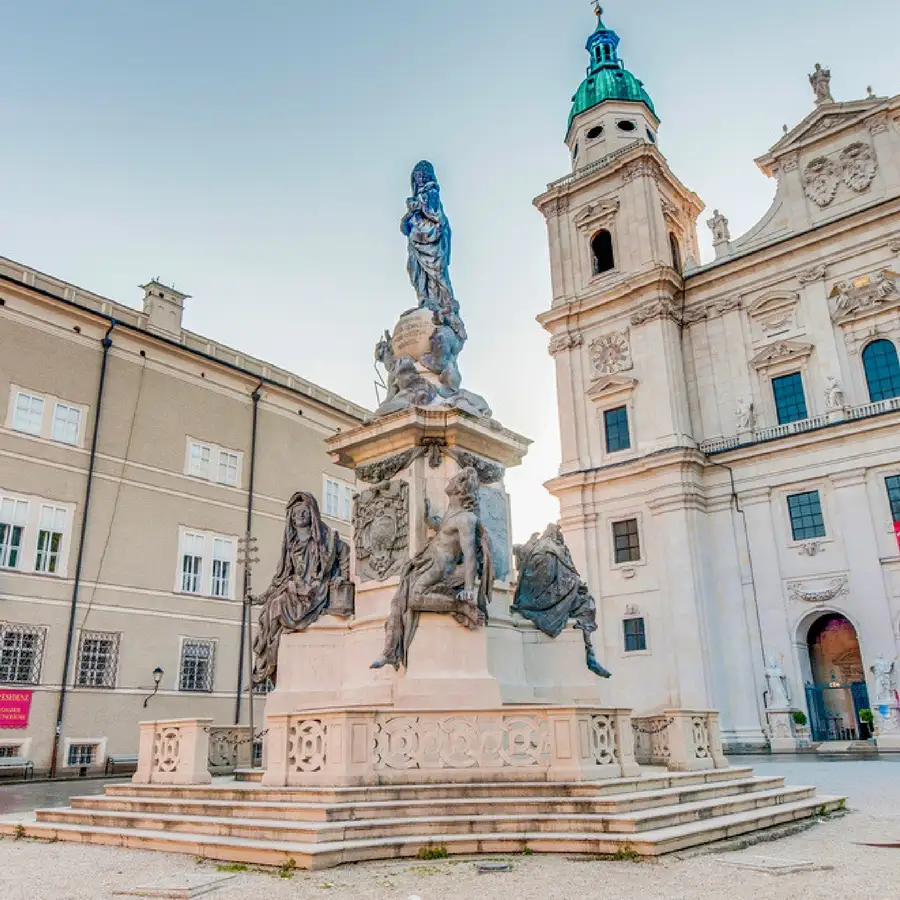
Day 5
Salzburg
Day 5
Salzburg




9:00 AM - 11:30 AM
Guided Walking Tour of Salzburg
Salzburg is simply overwhelming in all the best ways. It is alive with fascinating history, grandiose and sublime architecture fills every street and square, culture and music permeate the atmosphere, and it is surrounded by breath-taking natural scenery. This guided tour with a local will provide the context needed to bring all of this beauty into perspective, and to connect the physical city to its history, culture, and environment.

Mozartplatz
One of several grand squares in the center of Altstadt in Salzburg.
Show More

Salzburg Cathedral
Visit Salzburg's largest and most impressive church.
Show More

Mozartplatz
One of several grand squares in the center of Altstadt in Salzburg.
Show More

Salzburg Cathedral
Visit Salzburg's largest and most impressive church.
Show More

Mozartplatz
One of several grand squares in the center of Altstadt in Salzburg.
Show More

Salzburg Cathedral
Visit Salzburg's largest and most impressive church.
Show More
prev
next

Day 5
Salzburg

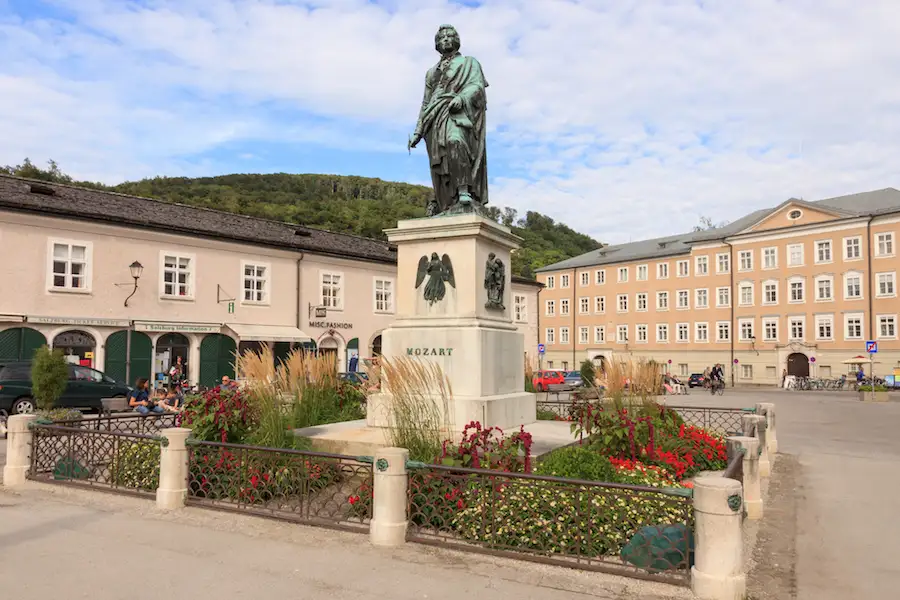
Mozartplatz
 Highlight of Guided Walking Tour of Salzburg
Highlight of Guided Walking Tour of SalzburgOne of several grand squares in the center of Altstadt in Salzburg.
One of several grand squares in the center of Altstadt in Salzburg. In the Mozartplatz you can find a statue of the famous composer.

Salzburg Cathedral
 Highlight of Guided Walking Tour of Salzburg
Highlight of Guided Walking Tour of SalzburgVisit Salzburg's largest and most impressive church.
The current cathedral was built between 1614-1628 and is a masterpiece of baroque architecture. The cathedral was largely destroyed by an Allied bomb in WWII but was restored by 1959. One of the most significant treasures in the cathedral is the Baptismal Font, which was cast in 1321 and rests on copper lions dating back to the 1100s.

Mozartplatz
 Highlight of Guided Walking Tour of Salzburg
Highlight of Guided Walking Tour of SalzburgOne of several grand squares in the center of Altstadt in Salzburg.
One of several grand squares in the center of Altstadt in Salzburg. In the Mozartplatz you can find a statue of the famous composer.

Salzburg Cathedral
 Highlight of Guided Walking Tour of Salzburg
Highlight of Guided Walking Tour of SalzburgVisit Salzburg's largest and most impressive church.
The current cathedral was built between 1614-1628 and is a masterpiece of baroque architecture. The cathedral was largely destroyed by an Allied bomb in WWII but was restored by 1959. One of the most significant treasures in the cathedral is the Baptismal Font, which was cast in 1321 and rests on copper lions dating back to the 1100s.

Mozartplatz
 Highlight of Guided Walking Tour of Salzburg
Highlight of Guided Walking Tour of SalzburgOne of several grand squares in the center of Altstadt in Salzburg.
One of several grand squares in the center of Altstadt in Salzburg. In the Mozartplatz you can find a statue of the famous composer.

Salzburg Cathedral
 Highlight of Guided Walking Tour of Salzburg
Highlight of Guided Walking Tour of SalzburgVisit Salzburg's largest and most impressive church.
The current cathedral was built between 1614-1628 and is a masterpiece of baroque architecture. The cathedral was largely destroyed by an Allied bomb in WWII but was restored by 1959. One of the most significant treasures in the cathedral is the Baptismal Font, which was cast in 1321 and rests on copper lions dating back to the 1100s.
prev
next

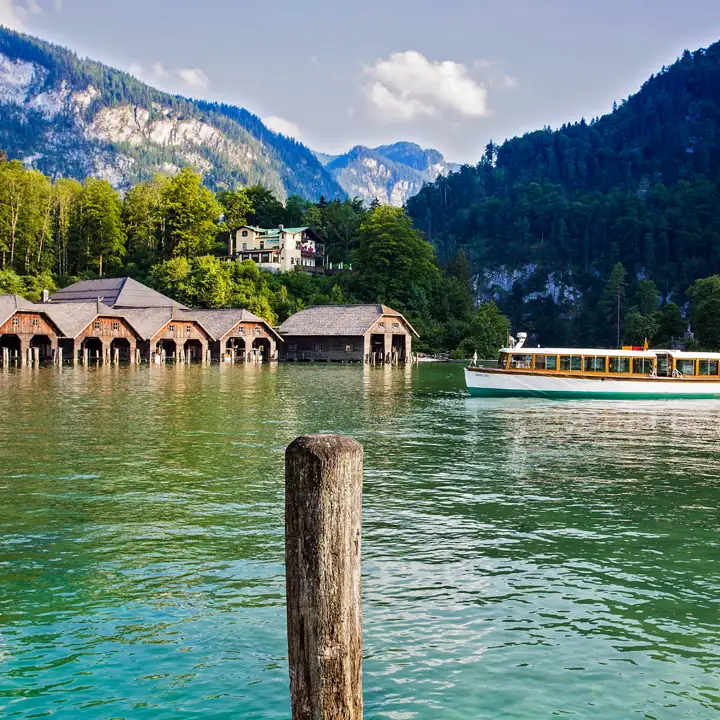
Day 6
Salzburg
Day 6
Salzburg


Early Morning to Afternoon
Königssee Lake
The breathtakingly beautiful Königssee (King's Lake) is the deepest lake in the Alps and is surrounded by steep mountains. Taking a cruise on the lake is an unforgettable experience. The boat will take you to the red-onion domed Kloster St. Bartolomä, where you then take a relaxing and enchanting walk along the forested lakeshore. For serious hikers, you can also continue on the boat to the far end of the lake, and then take a hike to a dramatic waterfall.

Obersee
Take a short hike to this stunning lake nestled within the mountains.
Show More

St Bartholomew's Church
Hop off the boat for a pleasant and easy walk along the lake shore near this onion-domed church.
Show More

Königssee Cruise
Relax on an unforgettable cruise across the lake, hopping on an off when you please.
Show More

Malerwinkl
Venture a little further to find a perfect view of the lake.
Show More

Jennerbahn Cable Car
Take an exhilarating ride into the Alpine peaks above the lake.
Show More

Obersee
Take a short hike to this stunning lake nestled within the mountains.
Show More

St Bartholomew's Church
Hop off the boat for a pleasant and easy walk along the lake shore near this onion-domed church.
Show More

Königssee Cruise
Relax on an unforgettable cruise across the lake, hopping on an off when you please.
Show More

Malerwinkl
Venture a little further to find a perfect view of the lake.
Show More

Jennerbahn Cable Car
Take an exhilarating ride into the Alpine peaks above the lake.
Show More

Obersee
Take a short hike to this stunning lake nestled within the mountains.
Show More
prev
next

Day 6
Salzburg

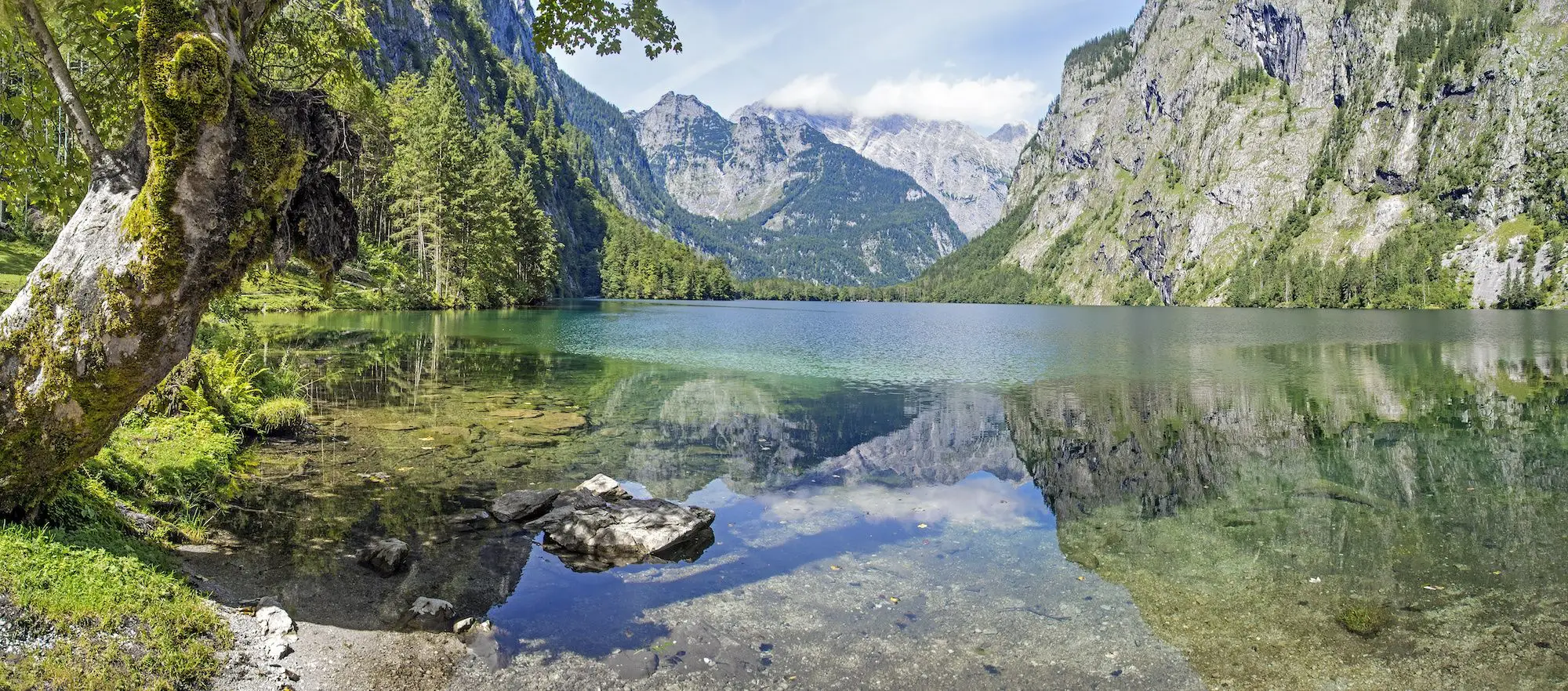
Obersee
 Highlight of Königssee Lake
Highlight of Königssee LakeTake a short hike to this stunning lake nestled within the mountains.
You can take a quick jaunt to the Obersee, or better yet, you can take a 5 miles hike to a waterfall above the lake. The trail is well-maintained and well-traveled, although rocky and steep at times. The hike begins with a fairly flat and easy walk from the boat docks to the Obersee lake. You will then follow a trail along the right shore of the lake. The trail becomes rocky and steep, and you must ascend about 250 feet. At the high points of the trail, you will have a beautiful view of the lake below and surrounding mountains. You will then descend and reach the far end of the lake, where you will enjoy another beautiful view. You will then continue hiking towards the end of the valley, climbing another approximately 350 feet to reach the end of the valley, where you will see the waterfalls. Keep in mind that at the end of summer or in fall the waterfall may not be very impressive.

St Bartholomew's Church
 Highlight of Königssee Lake
Highlight of Königssee LakeHop off the boat for a pleasant and easy walk along the lake shore near this onion-domed church.
To take this easy, flat, but very beautiful hike, from the boat docks, follow the orange signs for the "St. Bartholomä-Rundweg". You will make a circle on a well-maintained trail, first walking along the lakeshore for about half a mile, and then turn left into the forest. Continue following the signs for the Rundweg, taking another left after about 350 yards, and returning to the docks in a little less than half a mile.
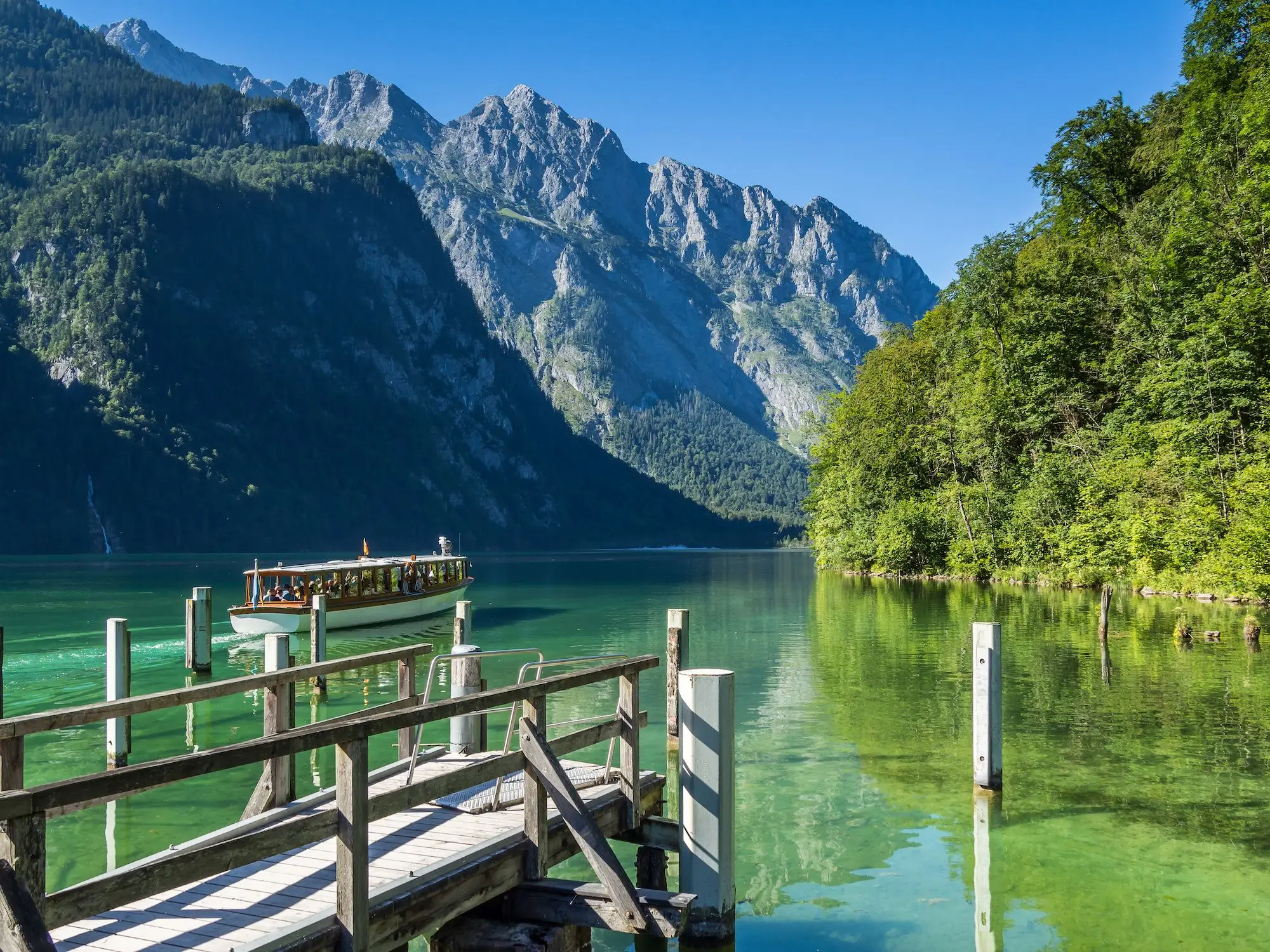
Königssee Cruise
 Highlight of Königssee Lake
Highlight of Königssee LakeRelax on an unforgettable cruise across the lake, hopping on an off when you please.
The cruises are made all the more enjoyable as the electric boats are almost completely quiet. Nothing will distract you for the atmosphere and scenery. Cruises occur all year long unless the lake is iced over. Tickets are sold directly at the docks, although getting there early is highly recommended to avoid long lines.
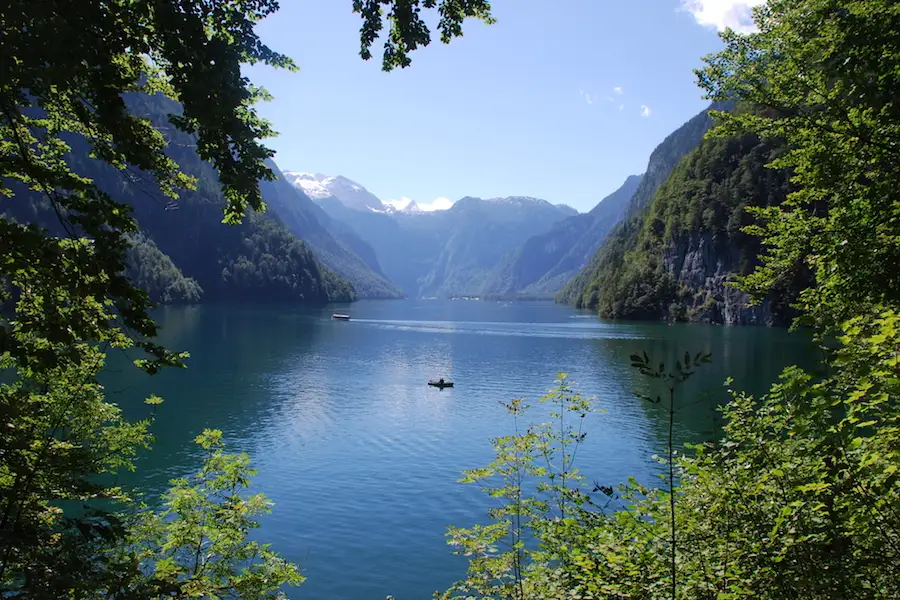
Malerwinkl
 Highlight of Königssee Lake
Highlight of Königssee LakeVenture a little further to find a perfect view of the lake.
The Malerwinkl (i.e. the Painters Angle) is less than a mile walk from the boat docks and offers a picture-frame view of the lake. You can walk down to the water and soak your feet. After enjoying the view, you can head back, or take a strenuous, approximately hour-long hike to the Jennerbahn cable car station. Just follow the signs for the Malerwinkl-Rundweg and the Jennerbahn-Talstation. This is a trail for experienced hikers with proper footwear, which includes a climb of about 400 feet.

Jennerbahn Cable Car
 Highlight of Königssee Lake
Highlight of Königssee LakeTake an exhilarating ride into the Alpine peaks above the lake.
You will enjoy amazing views of the lake and the surrounding Bavarian Alps. If you are up for it, you can even hike in the mountains as well, or ski in the winter. You can board the Jennerbahn cable car near the same parking area and bus stop which services the lake. It costs approx. 27.50 EUR for an adult roundtrip ticket to the top. You can save money by hiking back down, but this is only recommended for experienced hikers with good footwear.

Obersee
 Highlight of Königssee Lake
Highlight of Königssee LakeTake a short hike to this stunning lake nestled within the mountains.
You can take a quick jaunt to the Obersee, or better yet, you can take a 5 miles hike to a waterfall above the lake. The trail is well-maintained and well-traveled, although rocky and steep at times. The hike begins with a fairly flat and easy walk from the boat docks to the Obersee lake. You will then follow a trail along the right shore of the lake. The trail becomes rocky and steep, and you must ascend about 250 feet. At the high points of the trail, you will have a beautiful view of the lake below and surrounding mountains. You will then descend and reach the far end of the lake, where you will enjoy another beautiful view. You will then continue hiking towards the end of the valley, climbing another approximately 350 feet to reach the end of the valley, where you will see the waterfalls. Keep in mind that at the end of summer or in fall the waterfall may not be very impressive.

St Bartholomew's Church
 Highlight of Königssee Lake
Highlight of Königssee LakeHop off the boat for a pleasant and easy walk along the lake shore near this onion-domed church.
To take this easy, flat, but very beautiful hike, from the boat docks, follow the orange signs for the "St. Bartholomä-Rundweg". You will make a circle on a well-maintained trail, first walking along the lakeshore for about half a mile, and then turn left into the forest. Continue following the signs for the Rundweg, taking another left after about 350 yards, and returning to the docks in a little less than half a mile.

Königssee Cruise
 Highlight of Königssee Lake
Highlight of Königssee LakeRelax on an unforgettable cruise across the lake, hopping on an off when you please.
The cruises are made all the more enjoyable as the electric boats are almost completely quiet. Nothing will distract you for the atmosphere and scenery. Cruises occur all year long unless the lake is iced over. Tickets are sold directly at the docks, although getting there early is highly recommended to avoid long lines.

Malerwinkl
 Highlight of Königssee Lake
Highlight of Königssee LakeVenture a little further to find a perfect view of the lake.
The Malerwinkl (i.e. the Painters Angle) is less than a mile walk from the boat docks and offers a picture-frame view of the lake. You can walk down to the water and soak your feet. After enjoying the view, you can head back, or take a strenuous, approximately hour-long hike to the Jennerbahn cable car station. Just follow the signs for the Malerwinkl-Rundweg and the Jennerbahn-Talstation. This is a trail for experienced hikers with proper footwear, which includes a climb of about 400 feet.

Jennerbahn Cable Car
 Highlight of Königssee Lake
Highlight of Königssee LakeTake an exhilarating ride into the Alpine peaks above the lake.
You will enjoy amazing views of the lake and the surrounding Bavarian Alps. If you are up for it, you can even hike in the mountains as well, or ski in the winter. You can board the Jennerbahn cable car near the same parking area and bus stop which services the lake. It costs approx. 27.50 EUR for an adult roundtrip ticket to the top. You can save money by hiking back down, but this is only recommended for experienced hikers with good footwear.

Obersee
 Highlight of Königssee Lake
Highlight of Königssee LakeTake a short hike to this stunning lake nestled within the mountains.
You can take a quick jaunt to the Obersee, or better yet, you can take a 5 miles hike to a waterfall above the lake. The trail is well-maintained and well-traveled, although rocky and steep at times. The hike begins with a fairly flat and easy walk from the boat docks to the Obersee lake. You will then follow a trail along the right shore of the lake. The trail becomes rocky and steep, and you must ascend about 250 feet. At the high points of the trail, you will have a beautiful view of the lake below and surrounding mountains. You will then descend and reach the far end of the lake, where you will enjoy another beautiful view. You will then continue hiking towards the end of the valley, climbing another approximately 350 feet to reach the end of the valley, where you will see the waterfalls. Keep in mind that at the end of summer or in fall the waterfall may not be very impressive.
prev
next


Day 7
Salzburg to Ljubljana
Day 7
Salzburg to Ljubljana




9:10 AM
Transfer to Rail Station
Most trains depart from Salzburg Main Station (Salzburg Hbf) station, the largest station in the city. Before spending money on a transfer, be sure to check whether your hotel is within easy walking distance. Also consider that public transport is the cheapest and sometimes fastest option. If staying at a hotel, they can order a reliable taxi. Some private transfers will even help with your bags. Uber is also available for those with the app.

Day 7
Salzburg to Ljubljana



Day 8
Ljubljana
Day 8
Ljubljana



10:00 AM - 12:00 PM
Guided Cycling Tour of Ljubljana
On this guided cycling tour you will pedal along the enchanting embankments on the river Ljubljanica all the way to the Ljubljana Botanic Garden, take a garden tour, and continue through the famous vegetable gardens of Krakovo towards Tivoli Park to enjoy a rest and a picnic snack there. On the last leg of the tour, you will visit the Metelkova mesto alternative culture center.

Day 8
Ljubljana



Day 9
Ljubljana
Day 9
Ljubljana

Morning to Evening
Excursion to Lake Bled
With its mountain setting, dark turquoise waters, boats rowing passengers out to the island church, and dramatic cliff-top castle, Lake Bled is picture-postcard perfect, making it the most popular destination in Slovenia for both international and domestic tourists alike. You can take a walk or ride a tourist train around the lake, row out to the island, and dine alongside the enchanting shoreline. With enough time to spare, you can also take in the dramatic Vintgar Gorge and the beautiful medieval village of Radovljica. Lake Bled is about an hour-and-a-half trip from Ljubljana. You have two options for getting to there by public transport - bus or train. Buses depart Ljubljana more frequently and arrive at a very convenient location near the lakeshore in Bled, but they can get very crowded during the summer, especially at the weekends when seemingly every young backpacker in the country wants to get there, while the train departs more infrequently and doesn't arrive directly in Bled, but it isn't as crowded. Of course you can also just take a guided excursion if you want to keep it simple.

Vintgar Gorge
Follow along the cliffsides deep into this incredibly scenic gorge.
Show More

The Village of Radovljica and its Beekeeping Museum
If you like honey, chocolate, and gingerbread, make time for the small but exquisitely preserved medieval town of Radovljica, just 4 miles (6km) south-east of Bled.
Show More

Bled Island
Row (or be rowed) to this beautiful island in the center of Lake Bled.
Show More

Bled Castle
Stare down at the lake from this dramatic castle precariously perched on a cliff.
Show More

Vintgar Gorge
Follow along the cliffsides deep into this incredibly scenic gorge.
Show More

The Village of Radovljica and its Beekeeping Museum
If you like honey, chocolate, and gingerbread, make time for the small but exquisitely preserved medieval town of Radovljica, just 4 miles (6km) south-east of Bled.
Show More

Bled Island
Row (or be rowed) to this beautiful island in the center of Lake Bled.
Show More

Bled Castle
Stare down at the lake from this dramatic castle precariously perched on a cliff.
Show More
prev
next

Day 9
Ljubljana


Vintgar Gorge
 Highlight of Excursion to Lake Bled
Highlight of Excursion to Lake BledFollow along the cliffsides deep into this incredibly scenic gorge.
Another outstanding sight near Lake Bled is Vintgar Gorge, an impressively deep one mile (1.6km) ravine about 2.5 miles (4km) north of town. It was not officially discovered until 1891, but now it's easily accessible via a continuous chain of wooden gantries and bridges, suspended from the precipitous rock face, and running the entire length of the gorge. There are a number of ways to get there, including on foot, by bike, train (take one from Jezero Bled station one stop to Podhom and follow the signs to the gorge), bus (they run frequently during the summer months from Bled bus station), or taxi. Also, ask for a map from the information center so you don't get lost. You should take into consideration, however, that the gorge is rather wet and a little bit slippery, and bottlenecks form on the narrow gantries during the height of the tourist season as people stop to take photos.

The Village of Radovljica and its Beekeeping Museum
 Highlight of Excursion to Lake Bled
Highlight of Excursion to Lake BledIf you like honey, chocolate, and gingerbread, make time for the small but exquisitely preserved medieval town of Radovljica, just 4 miles (6km) south-east of Bled.
Built on an outcrop above the River Sava and the beautiful Sava Valley, everything of interest in the town is centered around the wonderfully quiet Linhartov trg (Linhart Square), which is framed by Gothic and Renaissance buildings. The highlight is Thurn Mansion, clearly recognizable by its thickly stuccoed facade and vast spread of coats of arms. Inside, a magnificent double stairway leads up to the truly splendid Beekeeping Museum. Don't be fooled into thinking that it must invariably be a dull topic, as beekeeping is one of Slovenia's oldest and most celebrated traditions. After going over the history of beekeeping and examples of pioneering apiculture the undoubted high point of the museum is its collection of over 200 beehive panels - wooden end panels painted with religious, satirical or humorous motifs and scenes. Otherwise check out the Parish Church of St Peter just to the east of the museum, and the best-preserved houses on the square: no.3 Vidic House and no.22, the muralled Šiveč House. Radovljica also has a long chocolate and gingerbread-making tradition, so don't miss the live gingerbread workshop and museum at no.2 Pension Lectar.
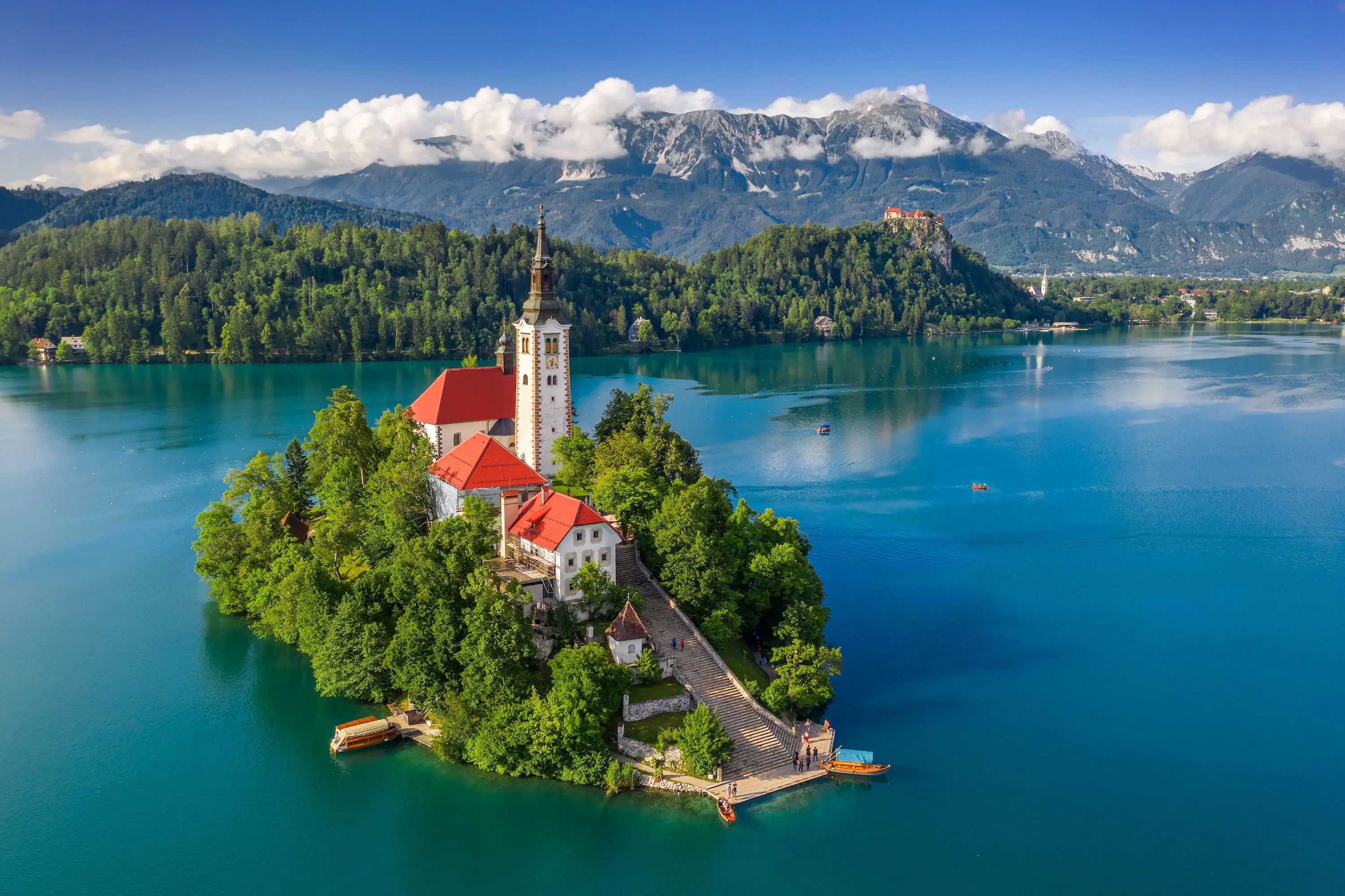
Bled Island
 Highlight of Excursion to Lake Bled
Highlight of Excursion to Lake BledRow (or be rowed) to this beautiful island in the center of Lake Bled.
The most recognizable symbol of Bled Island is the Church of the Assumption, although there are a handful of other buildings on the islet. The church dates from 1689 and its most outstanding features are the well-preserved frescoes. A wishing bell, which keeps many visitors amused, was installed in 1534, though a larger bell hangs in the enormous free-standing belfry. Weddings are held regularly in the church and traditionally it is considered good luck for a groom to carry his bride up the 99 stone steps on the day of their wedding before ringing the bell and making a wish inside the church. Numerous pletna boats take passengers to the island. A pletna looks sort of like a Venetian gondola, but wider. You'll pay about 15 EUR for a return journey, which includes 25min there, 40min on the island itself, and another 25min back, i.e. an hour-and-a-half altogether. The pletna oarsmen will be happy to answer your questions as you make your way across the lake. Only locals are permitted to operate a pletna. The tradition has been passed from generation to generation for the past few centuries. The pletna operate all year round depending on the weather. If you want to expend your own energy to get across the lake, then there a number of places around the lakeshore where you can rent a rowboat and get to the island under your own steam. There's also a motorized ferry that runs regularly from the main tourist information office for around 12 EUR.

Bled Castle
 Highlight of Excursion to Lake Bled
Highlight of Excursion to Lake BledStare down at the lake from this dramatic castle precariously perched on a cliff.
Perched up high on a precipitous craggy bluff near the town center is Bled Castle, enclosed by a Romanesque wall and studded with stout parapets, towers and ramparts, just as any medieval castle should be. Originally constructed in the 11th century, the castle's present appearance dates from the 17th century, and is characterized by a lower and upper courtyard. Probably its best feature is the beautiful chapel. There are outstanding views from the castle terrace of the lake and island below, while the castle restaurant has a reputation as one of the best in Lake Bled. Close by at the start of one of the tracks leading up to the castle you'll also find the photogenic Parish Church of St Martin.

Vintgar Gorge
 Highlight of Excursion to Lake Bled
Highlight of Excursion to Lake BledFollow along the cliffsides deep into this incredibly scenic gorge.
Another outstanding sight near Lake Bled is Vintgar Gorge, an impressively deep one mile (1.6km) ravine about 2.5 miles (4km) north of town. It was not officially discovered until 1891, but now it's easily accessible via a continuous chain of wooden gantries and bridges, suspended from the precipitous rock face, and running the entire length of the gorge. There are a number of ways to get there, including on foot, by bike, train (take one from Jezero Bled station one stop to Podhom and follow the signs to the gorge), bus (they run frequently during the summer months from Bled bus station), or taxi. Also, ask for a map from the information center so you don't get lost. You should take into consideration, however, that the gorge is rather wet and a little bit slippery, and bottlenecks form on the narrow gantries during the height of the tourist season as people stop to take photos.

The Village of Radovljica and its Beekeeping Museum
 Highlight of Excursion to Lake Bled
Highlight of Excursion to Lake BledIf you like honey, chocolate, and gingerbread, make time for the small but exquisitely preserved medieval town of Radovljica, just 4 miles (6km) south-east of Bled.
Built on an outcrop above the River Sava and the beautiful Sava Valley, everything of interest in the town is centered around the wonderfully quiet Linhartov trg (Linhart Square), which is framed by Gothic and Renaissance buildings. The highlight is Thurn Mansion, clearly recognizable by its thickly stuccoed facade and vast spread of coats of arms. Inside, a magnificent double stairway leads up to the truly splendid Beekeeping Museum. Don't be fooled into thinking that it must invariably be a dull topic, as beekeeping is one of Slovenia's oldest and most celebrated traditions. After going over the history of beekeeping and examples of pioneering apiculture the undoubted high point of the museum is its collection of over 200 beehive panels - wooden end panels painted with religious, satirical or humorous motifs and scenes. Otherwise check out the Parish Church of St Peter just to the east of the museum, and the best-preserved houses on the square: no.3 Vidic House and no.22, the muralled Šiveč House. Radovljica also has a long chocolate and gingerbread-making tradition, so don't miss the live gingerbread workshop and museum at no.2 Pension Lectar.

Bled Island
 Highlight of Excursion to Lake Bled
Highlight of Excursion to Lake BledRow (or be rowed) to this beautiful island in the center of Lake Bled.
The most recognizable symbol of Bled Island is the Church of the Assumption, although there are a handful of other buildings on the islet. The church dates from 1689 and its most outstanding features are the well-preserved frescoes. A wishing bell, which keeps many visitors amused, was installed in 1534, though a larger bell hangs in the enormous free-standing belfry. Weddings are held regularly in the church and traditionally it is considered good luck for a groom to carry his bride up the 99 stone steps on the day of their wedding before ringing the bell and making a wish inside the church. Numerous pletna boats take passengers to the island. A pletna looks sort of like a Venetian gondola, but wider. You'll pay about 15 EUR for a return journey, which includes 25min there, 40min on the island itself, and another 25min back, i.e. an hour-and-a-half altogether. The pletna oarsmen will be happy to answer your questions as you make your way across the lake. Only locals are permitted to operate a pletna. The tradition has been passed from generation to generation for the past few centuries. The pletna operate all year round depending on the weather. If you want to expend your own energy to get across the lake, then there a number of places around the lakeshore where you can rent a rowboat and get to the island under your own steam. There's also a motorized ferry that runs regularly from the main tourist information office for around 12 EUR.

Bled Castle
 Highlight of Excursion to Lake Bled
Highlight of Excursion to Lake BledStare down at the lake from this dramatic castle precariously perched on a cliff.
Perched up high on a precipitous craggy bluff near the town center is Bled Castle, enclosed by a Romanesque wall and studded with stout parapets, towers and ramparts, just as any medieval castle should be. Originally constructed in the 11th century, the castle's present appearance dates from the 17th century, and is characterized by a lower and upper courtyard. Probably its best feature is the beautiful chapel. There are outstanding views from the castle terrace of the lake and island below, while the castle restaurant has a reputation as one of the best in Lake Bled. Close by at the start of one of the tracks leading up to the castle you'll also find the photogenic Parish Church of St Martin.
prev
next


Day 10
Depart Ljubljana
Day 10
Depart Ljubljana


Morning/Mid-Day
Excursion to Šmarna Gora
Šmarna Gora, or Mount Saint Mary, is the go-to short hiking destination for Ljubljana residents on the northern periphery of the Slovene capital. It's only a 20-minute bus trip from the city center followed by a 30-45-minute hike up through woods to the top of the hill for wonderful views of Ljubljana and the surrounding countryside. There are a beautiful old church and a cafe at the summit serving an assortment of traditional Slovene meals and the usual delicious cakes and desserts.

Day 10
Depart Ljubljana


What's Included In Austria and Slovenia Trip

Pre-Paid Tours and Activities:
- Guided Walk through Vienna's Inner City
- Guided Walking Tour of Salzburg
- Guided Walking Tour of Ljubljana
- Guided Group Cycling Tour of Ljubljana

Pre-Paid Transportation:
- 2nd Class Train Tickets from Vienna to Salzburg
- 2nd Class Train Tickets from Salzburg-Villach
- 2nd Class Train Tickets from Villach - Ljubljana
- Public Transport Tickets for Vienna

Accommodation:
- 3 nights at a hotel of your choice in Vienna
- 3 nights at a hotel of your choice in Salzburg
- 3 nights at a hotel of your choice in Ljubljana

Go Real Travel Mobile App:
- Itinerary Plan & Reservations Info
- Points of Interest
- Detailed Travel Information
- Maps & Directions
Other Trips You May Like

10 Days
From$1749USD

7 Days
From$1498USD

14 Days
From$2897USD
14-Day Trip to Historic Munich, Salzburg, Vienna, and Prague

Germany, Austria, Czech Republic

10 Days
From$2249USD
Perfect Whirlwind Itinerary to Prague, Salzburg, Vienna & Budapest

Czech Republic, Austria, Hungary

9 Days
From$1598USD

10 Days
From$1749USD
Melodies and Marvels: A 10-Day Musical Journey through Vienna, Salzburg, and Hallstatt

Austria

7 Days
From$1240USD

7 Days
From$1675USD

5 Days
From$868USD

10 Days
From$1749USD

7 Days
From$1498USD

14 Days
From$2897USD
14-Day Trip to Historic Munich, Salzburg, Vienna, and Prague

Germany, Austria, Czech Republic

10 Days
From$2249USD
Perfect Whirlwind Itinerary to Prague, Salzburg, Vienna & Budapest

Czech Republic, Austria, Hungary

9 Days
From$1598USD

10 Days
From$1749USD
Melodies and Marvels: A 10-Day Musical Journey through Vienna, Salzburg, and Hallstatt

Austria

7 Days
From$1240USD

7 Days
From$1675USD

5 Days
From$868USD
prev
next
Featured Blogs
prev
next
Our Customers Say It Best
Marianne Strydom, Paarl, South Africa
I just wanted to thank you for organizing an amazing trip for me – I packed in so much in such a short period of time and everything was just perfect. The way you do things makes it possible to really get to know the destination, which for me as a travel agent could not have been better. 

Otto Chuy, Los Angeles, California
I am still surprised how everything worked as planned, without a hitch. All instructions in your itinerary were precise and correct. Your suggestions and comments in each of the locations we went to were very helpful. All your guides, without exception, were wonderful and exactly on time. 

Malini Dutta, Boston, Massachusetts
We can't thank you enough for the detailed plans, maps, and suggestions. It really felt that someone was holding our hands and showing us around. We had all the excitement of discovering foreign lands, with none of the problems that can happen while negotiating unfamiliar places. In fact, all the cities felt like home within a few hours of arriving and exploring. 

Bev and Mark Frankel, Williamsburg, Virginia
We could not be more pleased with Go Real Travel! You took the guess work out of things like public transport but still managed to allow us the freedom to tour as we wanted. Our guides were exceptional and every time I saw a Viking Cruise tour of 25 people, I realized the quality experience we were getting with Go Real. 

Marianne Strydom, Paarl, South Africa
I just wanted to thank you for organizing an amazing trip for me – I packed in so much in such a short period of time and everything was just perfect. The way you do things makes it possible to really get to know the destination, which for me as a travel agent could not have been better. 

Otto Chuy, Los Angeles, California
I am still surprised how everything worked as planned, without a hitch. All instructions in your itinerary were precise and correct. Your suggestions and comments in each of the locations we went to were very helpful. All your guides, without exception, were wonderful and exactly on time. 

Malini Dutta, Boston, Massachusetts
We can't thank you enough for the detailed plans, maps, and suggestions. It really felt that someone was holding our hands and showing us around. We had all the excitement of discovering foreign lands, with none of the problems that can happen while negotiating unfamiliar places. In fact, all the cities felt like home within a few hours of arriving and exploring. 

Bev and Mark Frankel, Williamsburg, Virginia
We could not be more pleased with Go Real Travel! You took the guess work out of things like public transport but still managed to allow us the freedom to tour as we wanted. Our guides were exceptional and every time I saw a Viking Cruise tour of 25 people, I realized the quality experience we were getting with Go Real. 



Explore cities in more detail
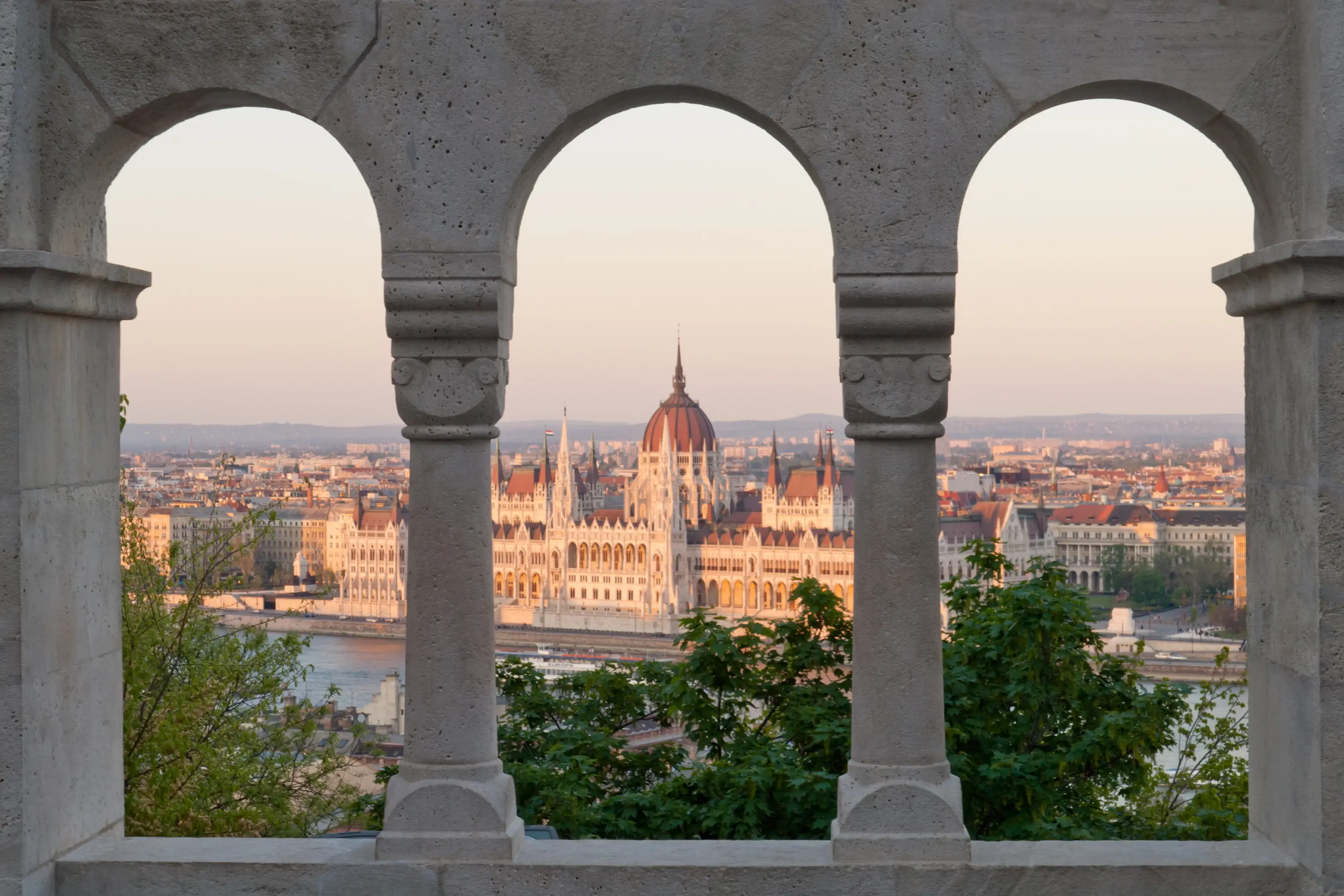
Budapest
Situated at the heart of Europe, Budapest is the capital of Hungary, appropriately named 'The Pearl of the Danube,' for its fixating and almost haunting beauty. Formerly two separate cities, Buda and Pest were forged into one by time, occupation, and the eight bridges that anchor them together today. From the Romans to the Communists, each occupier left its flavor profile in Budapest, evident in the famous spicy Hungarian stew known as 'goulash.' Budapest is a melting pot of history, culture, and taste, from the magnificent Baroque and neo-Gothic architecture to the Turkish thermal baths. After a long day of sightseeing, treat yourself to a glass of Tokaj, what King Louis XIV of France referred to as the "Wine of Kings, King of Wines". Budapest has a flavor to satisfy any taste.

Learn About Budapest
Build Budapest Trip
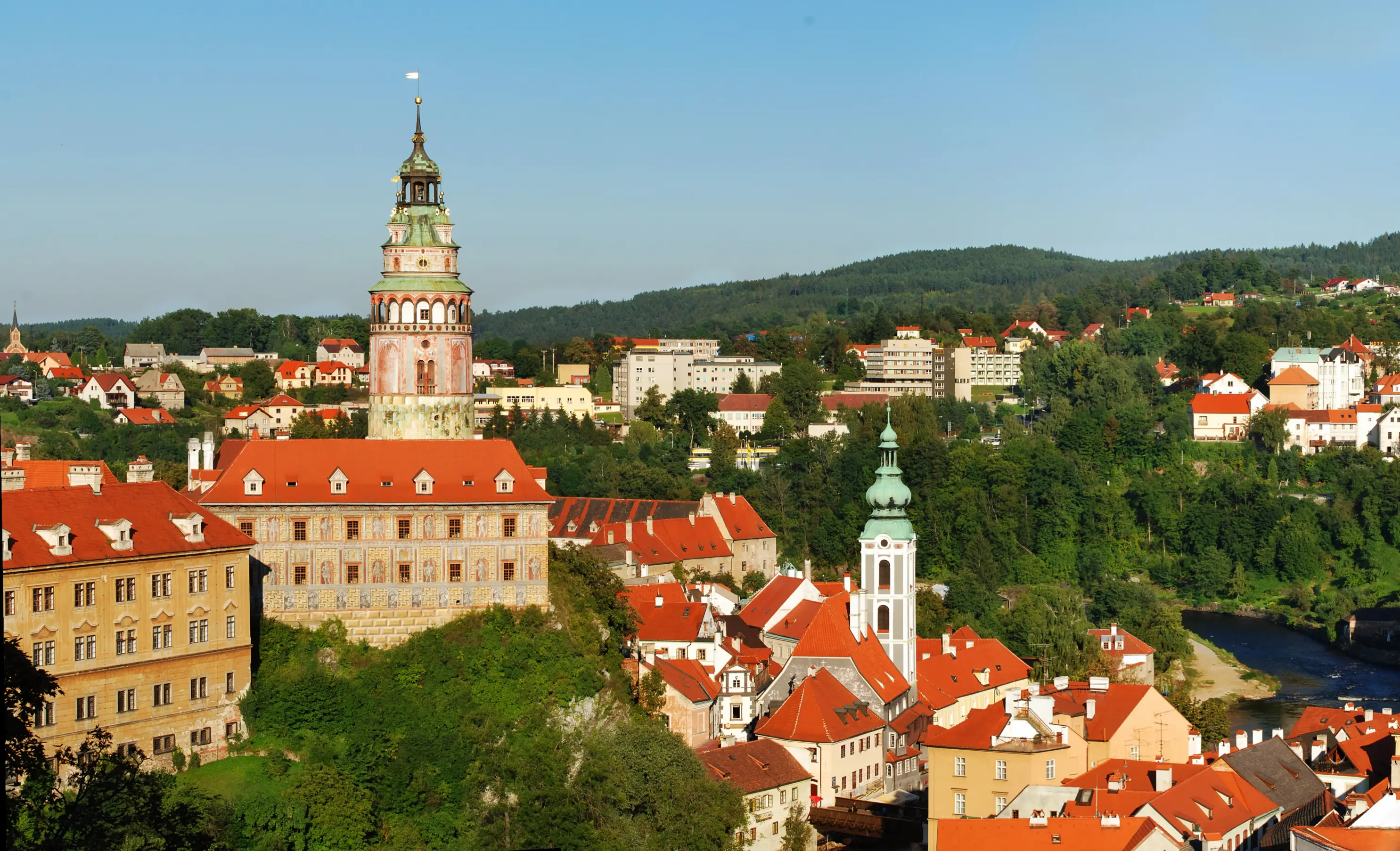
Cesky Krumlov
Cesky Krumlov is a charming little town in South Bohemia. It might be small, but it’s full of whimsical character and mystery. Walking through the narrow streets and across the bridge, the views of the medieval Cesky Krumlov Castle will take your breath away. At night, street musicians serenade visitors on the bridge where you can dance beneath the stars and the watchful eye of the magnificent tower. Dozens of unique local artisan shops, cafes, and restaurants are woven among the winding streets. In the summer, the city is lush with life and greenery. Rafters race down the river, stopping in the center along the way to enjoy a hearty meal before continuing their journey. In the winter, the main square transforms into a magnificent Christmas market and light blankets of snow cover the rooftops. This quaint little town will exceed your expectations and you may never want to leave.

Learn About Cesky Krumlov
Build Cesky Krumlov Trip
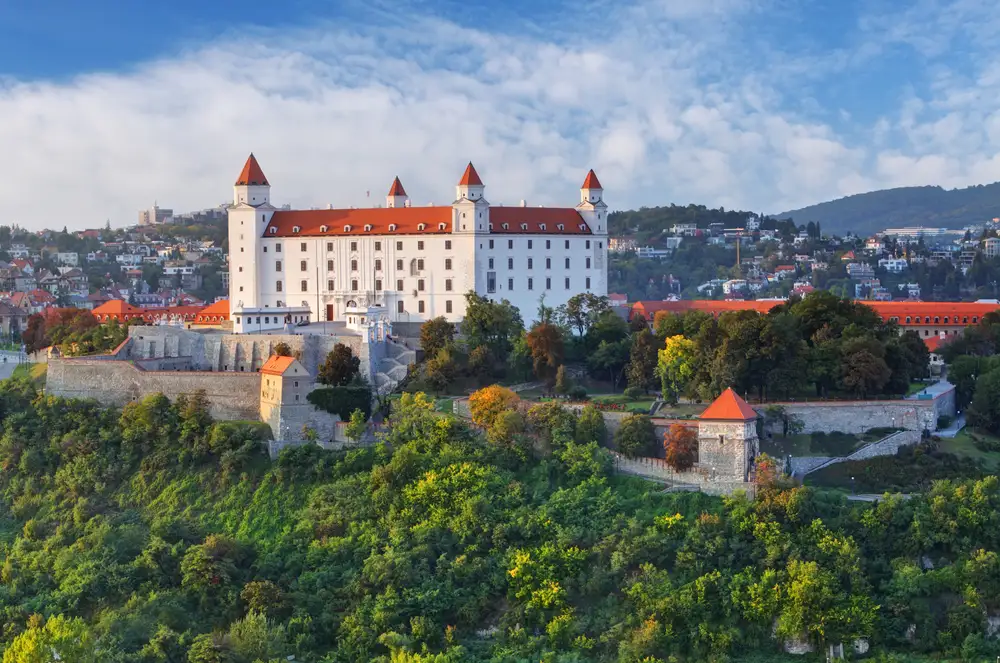
Bratislava
Bratislava is one of the most up-and-coming cities in central Europe. After years in the shadows of the Soviet bloc, and often drowned out by Prague, Bratislava has finally broken out. The Bratislavan region is now one of the richest per capita in the EU. This economic upswing has infused Bratislava with a newfound zeal. Trendy cafes and cool shopping centers are popping up everywhere, and the city’s already happening nightlife scene is only set to get better. Still less crowded than its central European neighbors Prague, Vienna, and Budapest, but just as intriguing, there’s really never been a better time for a visit to Bratislava. Ruled over by the Hungarians, Austrians, and most recently the Soviets, Bratislava is a city of strange contrasts. As soon as you arrive in Bratislava, you’ll see the pastel-hued churches, baroque houses, and the cobbled Old Town Square brush shoulders with modern brutalist buildings, retrofuturistic towers, and the clunky communist built UFO bridge. The city’s oldest building, its castle, is set atop the western edge of the Little Carpathian Hills like a trophy, the city’s hard-won main icon. For the first time in nearly a millennium, Bratislava has now seized control of its own destiny, and it shows.

Learn About Bratislava
Build Bratislava Trip
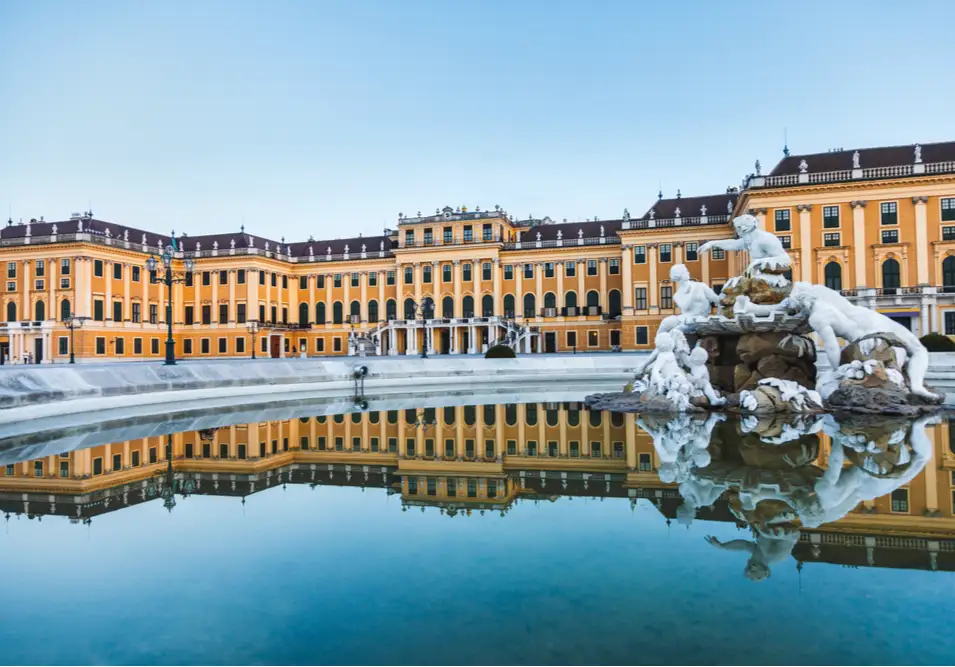
Vienna
Artistic and musical, historical and elegant, Vienna is the definition of class. The seat of the Habsburg monarchy for over six centuries, it's no wonder this city is still fit for royalty. Baroque buildings and imperial palaces dominate the cityscape, while locals stride gracefully through the streets, likely on their way to a classical music concert or art exhibition. Visitors from all over the world flock to Schonbrunn Palace, historical museums, and local eateries for authentic Viennese schnitzel. Vienna is also home to world-class wining and dining. Famous dishes include Wiener schnitzel, Tafelspitz (prime boiled beef), and apfelstrudel (apple strudel), all of which pair well with a glass of fine Austrian wine. No matter how long you spend in Vienna, you'll leave with a new appreciation for the finer things in life.

Learn About Vienna
Build Vienna Trip

Salzburg
You've probably heard this before— the city of Salzburg is straight out of a fairytale. Nestled in the mountains, this romantic city's Baroque architecture with colorful domes and spires is especially striking against the ancient fortress and Austrian Alpine backdrop. If you're looking for an amazing view, climb up to Hohensalzburg Fortress, Central Europe's largest intact fortress, for a jaw-dropping panorama of the city backed by misty mountains. Perhaps most famous for being the birthplace of the renowned composer Wolfgang Amadeus Mozart and the filming location for the classic The Sound of Music, this city has much to offer. Salzburg has become an important artistic and cultural center, featuring magnificent concert halls that uphold the city's tradition of classical music every day of the year, as well as acclaimed art exhibitions and museums. If you do it right, your visit to Salzburg will immerse you in the city's unforgettable atmosphere and keep you coming back for more.

Learn About Salzburg
Build Salzburg Trip

Ljubljana
One of Europe's smallest capitals, Ljubljana is still Slovenia's biggest city. What it lacks in size, though, it more than makes up for in charm, beauty, and personality. It's also one of Europe's greenest cities and is perfect for a bike ride or a leisurely walk. With plenty of open spaces, gorgeous architecture, and cultural treats, it's easy to fill the time here. The Tromostovje, or Triple Bridge, is one of Ljubljana's main attractions, connecting the Old Town with the new. Excellent pizza can be found here, and a series of bars and cafes are dotted throughout the town and along the banks of the river. The anarchic Metelkova City reveals Ljubljana's grittier side, with art exhibitions and performances housed in a disused military barracks. Ljubljana is charm and beauty compressed neatly into a small and pretty space.

Learn About Ljubljana
Build Ljubljana Trip

Budapest
Situated at the heart of Europe, Budapest is the capital of Hungary, appropriately named 'The Pearl of the Danube,' for its fixating and almost haunting beauty. Formerly two separate cities, Buda and Pest were forged into one by time, occupation, and the eight bridges that anchor them together today. From the Romans to the Communists, each occupier left its flavor profile in Budapest, evident in the famous spicy Hungarian stew known as 'goulash.' Budapest is a melting pot of history, culture, and taste, from the magnificent Baroque and neo-Gothic architecture to the Turkish thermal baths. After a long day of sightseeing, treat yourself to a glass of Tokaj, what King Louis XIV of France referred to as the "Wine of Kings, King of Wines". Budapest has a flavor to satisfy any taste.

Learn About Budapest
Build Budapest Trip

Cesky Krumlov
Cesky Krumlov is a charming little town in South Bohemia. It might be small, but it’s full of whimsical character and mystery. Walking through the narrow streets and across the bridge, the views of the medieval Cesky Krumlov Castle will take your breath away. At night, street musicians serenade visitors on the bridge where you can dance beneath the stars and the watchful eye of the magnificent tower. Dozens of unique local artisan shops, cafes, and restaurants are woven among the winding streets. In the summer, the city is lush with life and greenery. Rafters race down the river, stopping in the center along the way to enjoy a hearty meal before continuing their journey. In the winter, the main square transforms into a magnificent Christmas market and light blankets of snow cover the rooftops. This quaint little town will exceed your expectations and you may never want to leave.

Learn About Cesky Krumlov
Build Cesky Krumlov Trip

Bratislava
Bratislava is one of the most up-and-coming cities in central Europe. After years in the shadows of the Soviet bloc, and often drowned out by Prague, Bratislava has finally broken out. The Bratislavan region is now one of the richest per capita in the EU. This economic upswing has infused Bratislava with a newfound zeal. Trendy cafes and cool shopping centers are popping up everywhere, and the city’s already happening nightlife scene is only set to get better. Still less crowded than its central European neighbors Prague, Vienna, and Budapest, but just as intriguing, there’s really never been a better time for a visit to Bratislava. Ruled over by the Hungarians, Austrians, and most recently the Soviets, Bratislava is a city of strange contrasts. As soon as you arrive in Bratislava, you’ll see the pastel-hued churches, baroque houses, and the cobbled Old Town Square brush shoulders with modern brutalist buildings, retrofuturistic towers, and the clunky communist built UFO bridge. The city’s oldest building, its castle, is set atop the western edge of the Little Carpathian Hills like a trophy, the city’s hard-won main icon. For the first time in nearly a millennium, Bratislava has now seized control of its own destiny, and it shows.

Learn About Bratislava
Build Bratislava Trip

Vienna
Artistic and musical, historical and elegant, Vienna is the definition of class. The seat of the Habsburg monarchy for over six centuries, it's no wonder this city is still fit for royalty. Baroque buildings and imperial palaces dominate the cityscape, while locals stride gracefully through the streets, likely on their way to a classical music concert or art exhibition. Visitors from all over the world flock to Schonbrunn Palace, historical museums, and local eateries for authentic Viennese schnitzel. Vienna is also home to world-class wining and dining. Famous dishes include Wiener schnitzel, Tafelspitz (prime boiled beef), and apfelstrudel (apple strudel), all of which pair well with a glass of fine Austrian wine. No matter how long you spend in Vienna, you'll leave with a new appreciation for the finer things in life.

Learn About Vienna
Build Vienna Trip

Salzburg
You've probably heard this before— the city of Salzburg is straight out of a fairytale. Nestled in the mountains, this romantic city's Baroque architecture with colorful domes and spires is especially striking against the ancient fortress and Austrian Alpine backdrop. If you're looking for an amazing view, climb up to Hohensalzburg Fortress, Central Europe's largest intact fortress, for a jaw-dropping panorama of the city backed by misty mountains. Perhaps most famous for being the birthplace of the renowned composer Wolfgang Amadeus Mozart and the filming location for the classic The Sound of Music, this city has much to offer. Salzburg has become an important artistic and cultural center, featuring magnificent concert halls that uphold the city's tradition of classical music every day of the year, as well as acclaimed art exhibitions and museums. If you do it right, your visit to Salzburg will immerse you in the city's unforgettable atmosphere and keep you coming back for more.

Learn About Salzburg
Build Salzburg Trip

Ljubljana
One of Europe's smallest capitals, Ljubljana is still Slovenia's biggest city. What it lacks in size, though, it more than makes up for in charm, beauty, and personality. It's also one of Europe's greenest cities and is perfect for a bike ride or a leisurely walk. With plenty of open spaces, gorgeous architecture, and cultural treats, it's easy to fill the time here. The Tromostovje, or Triple Bridge, is one of Ljubljana's main attractions, connecting the Old Town with the new. Excellent pizza can be found here, and a series of bars and cafes are dotted throughout the town and along the banks of the river. The anarchic Metelkova City reveals Ljubljana's grittier side, with art exhibitions and performances housed in a disused military barracks. Ljubljana is charm and beauty compressed neatly into a small and pretty space.

Learn About Ljubljana
Build Ljubljana Trip
prev
next


 Map of Your Itinerary Route
Map of Your Itinerary Route
Zoom In to the cities to see your itinerary in more detail


 4.8
4.8 






